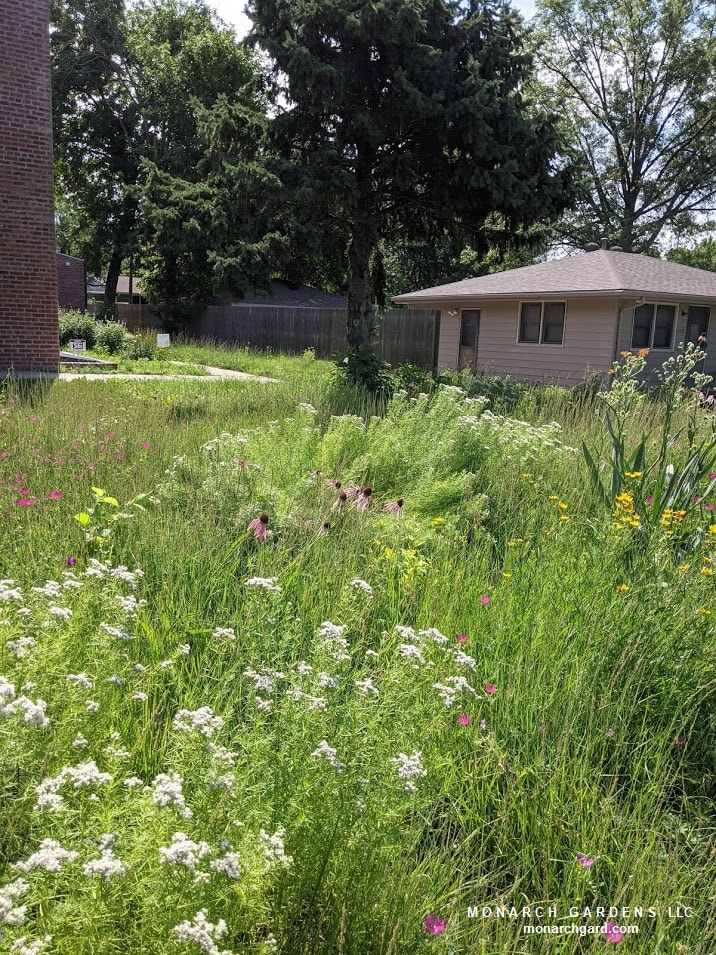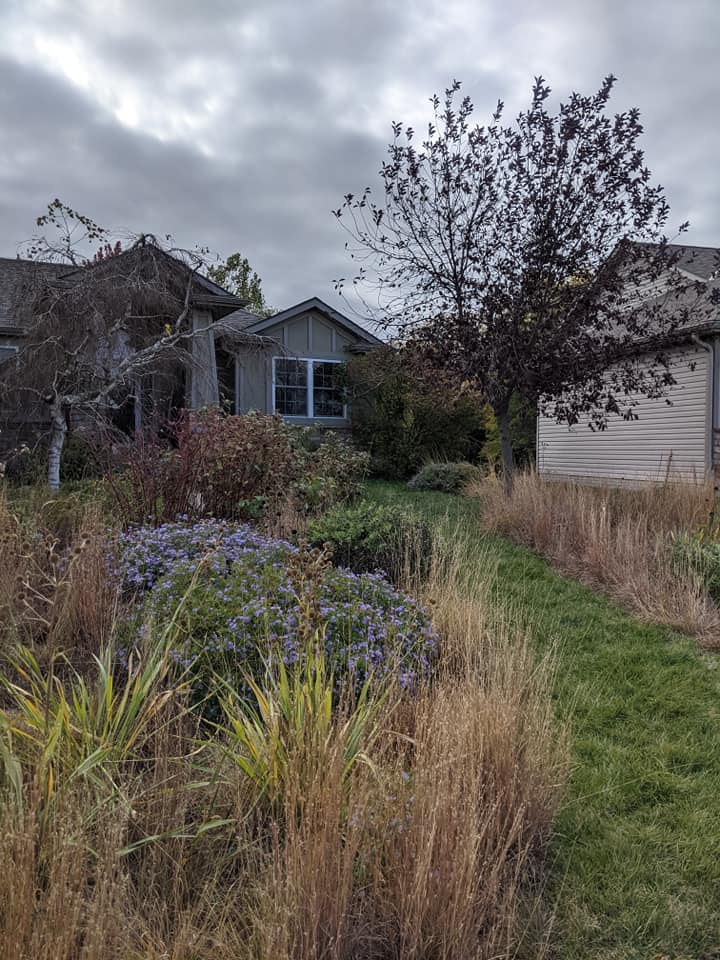In general, the benefit to warm-season bunchgrasses in a natural garden -- one based on plant communities and not specimens -- is that they suppress weeds, increase soil moisture, and hold soil in place. Not to mention habitat benefits for wildlife and winter interest for us. But over time grasses can out compete forbs, and this is especially true of taller species like big bluestem and indiangrass, both of which I'll never plant in a garden. But even little bluestem can self sow pretty well.
Recently, two clients with very small front yard lawn replacement meadows -- in which we used a short grass as a matrix or wood mulch replacement -- have been threatened by weed control authorities. That process starts with neighbors complaining of the unkempt look, aka nothing shorter than six inches. The additional issue here is that grasses tend to establish faster than most forbs, so the ornamental layer is lagging behind. There are ways to even the growth rate -- using grass seed and forb plugs, or planting into a loose soil medium, or using smaller grass plugs and larger forb containers (quarts or gallons). But in the end the same issues will arise -- the forbs need to have a fighting chance because grass is just as valuable to the various ecosystem services, whether the space is a regionally-appropriate meadow or an early succession space on the way to a shrubland or woodland.
What forbs have I noticed that tend to hold their own with bunchgrasses like little blustem, sideaots grama, and even blue grama? Let's start with a smaller, more manageable list with which you can experiment in a smaller space:
Baptisia spp (minor, australis, alba) -- I suspect these do well because of their deep central taproot that competes underground at a different level than fibrous-rooted bunchgrasses, and because the above ground form is branched and open. If a bunchgrass wants to finger up through it, no worries, as the Baptisia stems wire on up to sunlight and with bigger leaves to capture good amounts of sun.
Pycnanthemum tenuifolium -- I'm not sure why this species tends to do a bit better than P. virginianum, but I'm starting to notice a difference. Maybe it's that it is slightly more adapted to drier site conditions. In general I think P. virginianum is fuller and more vigorous, but not when grasses encroach in good density.
Dalea purpurea and candida -- Perhaps it's that these species find the gaps in bunchgrasses and exploit the heck out of those gaps. They also benefit from deep, central taproots and have foliage that's relatively open and airy.
Callirhoe involucrata -- It fingers nicely through and among grasses while taking heat and drought with aplomb. What else do we need to know?
Echinacea purpurea -- Although shorter-lived than E. pallida (which I prefer aesthetically), it does seem to hold its own. Maybe it's the larger leaves or the moderate self sowing, but it's the coneflower I'd use in a dense grass matrix even though it's over planted in the trade (don't use a cultivar, they tend to be weaker). One benefit to using it in a natural garden is that people recognize it, so it might help people read a non-traditional landscape and better accept it as purposeful. "Ah, I know that plant!"
Symphyotrichum oblongifolium -- After a few years this quasi-shrub, although it's a herbaceous perennial, will not allow much if anything to grow in its shade. Some of my specimens are even 3-4' in diameter but less than 2' tall. Their dense branching, even with small leaves, means little sunlight reaches the ground beneath them -- even Carex albicans vanishes. It's a lovely plant for wildlife cover in rain or snow, and it laughs at drought while being the last flower show of the growing season.
There are taller plants we could consider, too, that neither overwhelm or get overwhelmed by grasses: Liatris aspera, Oligoneuron rigidum, Coreopsis tripteris, Eupatorium altissiumum, and Symphyotrichum laeve. But tell us -- what works for you? And where are you located? Site conditions are also good information to know, as plant communities and their behavior differs.





 RSS Feed
RSS Feed

